Bodybuilding
What is Muscular Adaptation?
Muscular adaptation is an integral part of the training process. Every bodybuilder has faced at least one time this issue, and have tried to find out how to deal with it. Muscular adaptation define the situation when body feeling one and the same load over time just getting used to it.
It would be wrong to say that this phenomenon has only a negative impact. There are many types of sport where muscle adaptation help to do movements automatically, and this is especially important in case of competitions. An example fo this kind of sport can be boxing.
However, when it comes to bodybuilding, muscle adaptation is reduced to the addiction to the particular muscle load. Why is this bad? Mainly, because over time the effectiveness of exercise begins to decrease, and achieved points of muscle growth begin to show a negative trend.
In most cases, athletes try to change the training program every few months. But beginners have not to rush, as this is absolutely unnecessary. The explanation is that an untrained body is much less accustomed to the load, and for this reason, the same exercise performed systematically, can produce the desired result, even after six months.
Must Read: How to Set up Your Own Bodybuilding Training Program
So, how to struggle with muscle adaptation or at least to minimize its side effects?
There are some ways to reduce the impact of muscle adaptation on muscle growth. The most common solution is a preventive one, and consist of a systematic change of trained weights. If you train for a long time with the same weights, then muscle gets used to it and do not report any growth.

It is not possible to take off the athlete from the area of adaptation by just changing the weights. But if you extend the effective training to 12-15 weeks, each time changing the weight then getting off from adaptation stage is quite real.
Have to be mentioned that athlete's muscles are getting used not just to a specific weight, but also to the number of repetitions/approaches too. That’s why it is logical to assume that changing the number of each exercise can be a long time to forget about muscle adaptation.
Given that the change in the number of repetitions/approaches is necessarily accompanied by a change of weight, the total duration of outcomes of the training comes to about six months. Unfortunately, the muscles adapt to a certain movement too. Namely, this kind of adaptation is considered the most dangerous in bodybuilding for the simple reason that once accustomed to, the muscles will never be able to forget this movement.
And if we take into consideration the fact that most of the bodybuilders use a limited number of exercises, then it easy to conclude most of them will face the problem of muscle adaptation for sure. Adaptation reaction of our body to exercises, weights can be divided into the immediate reaction and long-term reaction.
Increased respiration or redistribution of blood flow in response to physical activity, increased heart rate during mental stimulation, are all features of immediate adaptation. In other words, rapid adaptation is considered the reaction of our body to single training.
Long-term adaptation occurs gradually, through prolonged or repeated action on the organism of certain stimuli. Thus, it appears as a result of continuously repeated training. Scientists believe that one of the most important moments of adaptation to muscular work is to develop mechanisms for storing and use of energy substrates, which are characteristic of this type of muscle activity.
In humans, the most energy-intensive energy reserves in the body are phosphates, glycogen, and triacylglycerols, ATP, and creatine phosphate reserves, or the so-called fosfagenov in muscle is very small. However, phosphates are constantly synthesized. Energy-glycogen and triacylglycerols constitute the bulk of reserve sources of fuel for the muscles.
Let’s discuss further the very mechanisms of adaptation to exercise. Biochemists believe in adapting to the short-term heavy use, changes in the work of enzymes and metabolic pathways. Under the influence of speed and strength training in the white muscle fibers increases the activity of glycolytic enzymes, ie, the enzymes that are involved in the process of glycolysis.
Moreover, the activity of these enzymes in the white muscle is the highest compared to other body tissues. In the muscle cells of the changing environment in which the work glycolytic enzymes. A very important aspect of this adaptation, as we shall see, is the storage of large amounts of glycogen. Glycogen stored in the muscles usually in the form of granules, which are located around the corresponding enzymes.
During adaptation to an intense workout, changes occur in the so-called buffer systems muscles. Once inside the cell with the heavy use of the concentration of the hydrogen ions, or, as they indicate, pH, it immediately affects the work of enzymes responsible for glycolysis.
We already know that the fastest and most powerful source of energy production in the muscle - is the use of creatine phosphate to regenerate ATP. Creatine is found in large quantities in the white muscle fibers. It is approximately 30 mmol creatinine at 1 g wet weight of muscle, however, the source of phosphate is running out with a load that lasts more than a few seconds. In support of the creatine phosphate energy exchange comes glycolysis.
Here are some important rules to follow in order to avoid muscular adaptation.

-Always change the types of exercises for muscle groups or subgroups. Let’s take for example squats exercise. Squats can be done using barbells, dumbbells, Smith machine, kettlebells, plates. Also you can alternate leg position, work with different weights or no weight. The scheme of sets and repetition can be changed also the way you want it to do. You are free to reinvent, change, to add and do them the way you want it do.
-Change the time of training. If you are training for a long time in the morning, that would be great to do a change and move your workout to even. There are a lot of variation to opt for, but most important is to find time and make this change from time to time.
-Modify speed of exercises. Do you accustomed to rapid execution of exercise? Make a change, and try to do exercise in a very slow temp. And on the contrary, if you perform exercises slowly, than it’s time for a rapid execution. Also, you can change the rest time between them, making them a bit longer in case of slow motions, and shorter in case of rapid execution.
-Try to add something new to your workout. This will be a great way to get your body into a new regime, thus taking it off from the adaptations stage. You can combine your bodybuilding workout with other of kind of sport, such as swimming, boxing or yoga. Try to combine them for a time, and come back to your traditional workout.
- You know very well, we are what we eat. Make some changes to this chapter too. Changing your nutrition is another great way to avoid reaching a plateau. Here are some ideas: if you never trained on empty stomach, then it’s time to try it. If you use do not eat before workout, than you should try to do it. Also, change the ration food, or eat more food with a low glycemic index.
There is an old known fact: our body has the ability to adapt to its environment. Our bodies get used to the same workouts, performed in the same way, with little variation of weights and time. It reaches a plateau and sometimes is hard to overcome it. That’s why all people coming to the gym to build nice lean muscle, should know about this phenomena.
But be aware of the fact that a too severe workout can make you more harm than benefits. You risk too much to get injured that will keep you out of the gym for a long time. The advice is to find a medium track, that will allow to safely build muscle mass and keep you away from reaching a plateau in your muscle growth.
Bodybuilding
Mastering Bodybuilding in 2025: Top Fitness Tips for Success

Bodybuilding is more than just a sport; it's a lifestyle that requires dedication, discipline, and a thorough understanding of fitness principles. As the world of fitness continues to evolve, bodybuilders must stay updated with the latest trends, techniques, and scientific advancements to achieve their goals. In 2025, several innovative approaches are redefining bodybuilding. Here are essential fitness tips for bodybuilders to excel this year.
Read More: Bodybuilder Winter Clothing: Staying Warm and Stylish
Embrace Technology-Driven Workouts
In 2025, technology plays a significant role in bodybuilding. Wearable devices, fitness apps, and virtual reality (VR) training are now integral components of an effective workout regimen.
Wearable Devices
Modern wearables track everything from heart rate and sleep patterns to muscle activation and caloric expenditure. Utilize these devices to monitor your progress and make data-driven adjustments to your training and nutrition plans.
Fitness Apps
Leverage fitness apps for customized workout plans, progress tracking, and virtual coaching. Many apps now incorporate artificial intelligence to provide personalized feedback and recommendations.
Virtual Reality Training
VR technology offers immersive workout experiences, allowing bodybuilders to simulate different training environments and scenarios. This can enhance motivation and add variety to your routine.
Focus on Functional Strength
While hypertrophy (muscle growth) remains a primary goal, functional strength is gaining importance. Functional strength training improves overall performance, reduces the risk of injury, and enhances daily activities.
 Check Out Our1 4 Weeks Quality Strength & Lean Muscles
Check Out Our1 4 Weeks Quality Strength & Lean Muscles
Compound Movements
Incorporate compound exercises like squats, deadlifts, and bench presses. These movements engage multiple muscle groups and joints, promoting balanced strength development.
Core Stability
Prioritize exercises that strengthen the core, such as planks, Russian twists, and leg raises. A strong core supports better lifting mechanics and reduces the risk of lower back injuries.
Optimize Nutrition for Muscle Growth and Recovery
Nutrition is the cornerstone of successful bodybuilding. In 2025, the focus is on personalized nutrition plans tailored to individual needs and goals.
Protein Intake
Ensure adequate protein intake to support muscle repair and growth. Aim for 1.6 to 2.2 grams of protein per kilogram of body weight per day, depending on your training intensity and goals.
 Click Here to Buy SynthaTrope By SynthaPharma
Click Here to Buy SynthaTrope By SynthaPharma
Nutrient Timing
Pay attention to nutrient timing to maximize muscle recovery and growth. Consume protein and carbohydrates within 30 minutes post-workout to replenish glycogen stores and kickstart muscle repair.
Supplements
Utilize supplements wisely. Creatine, branched-chain amino acids (BCAAs), and omega-3 fatty acids are popular choices for enhancing performance and recovery.
Prioritize Mental Health and Mindfulness
Mental health is increasingly recognized as a critical component of overall fitness. Incorporating mindfulness practices can improve focus, reduce stress, and enhance performance.
Meditation
Incorporate meditation into your daily routine to reduce stress and improve mental clarity. Mindfulness meditation can enhance your mind-muscle connection during workouts.
Visualization
Use visualization techniques to mentally rehearse your workouts. Visualizing successful lifts and achieving your goals can boost confidence and motivation.
Rest and Recovery
Prioritize rest and recovery to prevent burnout and overtraining. Ensure you get 7-9 hours of sleep per night and incorporate rest days into your training schedule.
Leverage Advanced Training Techniques
Advanced training techniques can help break through plateaus and stimulate muscle growth. In 2025, several methods are gaining popularity among bodybuilders.
Blood Flow Restriction (BFR) Training: BFR involves restricting blood flow to the muscles during low-intensity exercises. This technique can enhance muscle growth and strength without the need for heavy weights.
Eccentric Training: Focus on the eccentric (lowering) phase of exercises. Eccentric training can stimulate greater muscle damage and growth compared to traditional concentric movements.
Periodization: Implement periodization into your training plan. Varying the intensity, volume, and type of exercises can prevent plateaus and ensure continuous progress.
Incorporate Recovery and Mobility Work
Recovery and mobility are essential for preventing injuries and maintaining optimal performance. In 2025, bodybuilders are paying more attention to these aspects of training.
Foam Rolling and Myofascial Release: Use foam rollers and massage balls to release muscle tightness and improve flexibility. Regular myofascial release can reduce soreness and enhance recovery.
Stretching: Incorporate dynamic stretching before workouts and static stretching after workouts. Stretching improves range of motion and prevents muscle imbalances.
Cryotherapy and Hydrotherapy: Explore recovery techniques like cryotherapy (cold therapy) and hydrotherapy (water therapy) to reduce inflammation and accelerate muscle recovery.
Engage in Continuous Learning and Community Building
The fitness industry is constantly evolving, and staying informed is crucial for success. Engage in continuous learning and connect with the bodybuilding community for support and motivation.
Educational Resources: Read books, watch videos, and attend seminars to stay updated on the latest research and trends in bodybuilding.
Community Engagement: Join online forums, social media groups, and local bodybuilding clubs. Sharing experiences and knowledge with fellow bodybuilders can provide valuable insights and encouragement.
Professional Guidance: Consider working with a certified personal trainer or coach. Professional guidance can help you optimize your training and nutrition plans, ensuring you're on the right track.
With your FB Plus subscription or active FB Plus Pass, you now have access to 124 weeks of our most popular workout programs, which typically sell for $10-$30 each. Additionally, our popular 4-week Meal Plan is included. This is on top of the 38 Challenges and Programs that are already available to Plus members.
We've also introduced a new feature that many of you have requested. To assist you in choosing your next program, you can now preview each day of any program from its detail view. This feature lets you see all the included workout videos and content before you schedule it, ensuring you know exactly what to expect.
Conclusion
In 2025, bodybuilding is more than just lifting weights; it's a holistic approach to fitness that encompasses technology, nutrition, mental health, and advanced training techniques. By embracing these fitness tips, bodybuilders can achieve their goals, stay injury-free, and enjoy a fulfilling fitness journey. Remember, consistency and dedication are key to success in bodybuilding. Stay committed, keep learning, and most importantly, have fun on your path to becoming the best version of yourself.
Bodybuilding
Top Video Games for Bodybuilders in 2025

There are several video games that can be great for bodybuilders, combining fitness and fun! Here are some of the best options:
Ring Fit Adventure (Nintendo Switch)
The game uses the Ring-Con and Leg Strap to guide you through various exercises and adventures. It's a fun way to get a full-body workout while playing a game.
Fitness Boxing 2: VR Boxing Remastered (PlayStation VR)
It offers a full-body boxing workout with a variety of punches and combos. It's a great way to improve your fitness while enjoying a virtual boxing experience.
Must Read: Marvel-Inspired Training Clothing on Amazon
Just Dance 2024
This popular dance game gets you moving to the beat with a variety of songs and dance routines. It's a fun way to burn calories and improve your coordination.
Zumba Fitness
Burn It Off (Nintendo Wii): This game offers a fun and energetic Zumba workout, perfect for those who enjoy dancing and want to get a good cardio workout.
Yoga for Beginners
If you're looking for a more relaxing workout, yoga games can help improve flexibility and reduce stress. Many of these games offer guided yoga sessions that you can follow along with.
Gym Tycoon
This game lets you build and manage your own gym, complete with various workout equipment and fitness classes. It's a great way to learn about different exercises and how to create effective workout routines.
The Sims 4: Fitness Stuff Pack
This expansion pack for The Sims 4 adds fitness equipment and activities to the game, allowing you to improve your character's fitness and join the athlete career.
Grand Theft Auto: San Andreas
While not a traditional fitness game, this classic game includes bodybuilding activities that can help your character gain muscle and improve fitness.
Knockout Home Fitness (Nintendo Switch)
This game offers a variety of boxing workouts that can help improve your strength and endurance.
Gym Simulator 24 (PC)
In this simulation game, you can build and manage your own fitness empire, creating workout routines and managing gym equipment.
Let's Get Fit (Nintendo Switch)
This game focuses on pure workouts, allowing you to set programs and follow along with digital trainers for a customized fitness experience.
Beat Saber (VR)
A popular VR game where you slash blocks to the beat of the music, providing an intense full-body workout.
Synth Riders (PlayStation VR)
This game combines freestyle dance and fitness, offering high-tempo tracks and multiplayer modes for a fun and energetic workout.
Yoga Master (PlayStation)
Designed by professional yoga coaches, this game offers a variety of yoga lessons and poses to improve flexibility and reduce stress.
Les Mills Bodycombat (PlayStation VR)
A martial arts-inspired workout game with a range of workout plans and coaching to keep you motivated.
OhShape Ultimate (PlayStation VR)
This game provides a full-body cardio workout with six sessions and two difficulty levels, designed to engage every part of your body.
These games offer a mix of cardio, strength, and flexibility workouts, making them great additions to your fitness routine.
Related Article: Supplemental Breast Milk for Bodybuilders
Bodybuilding
2nd Edition of Natural Bodybuilding Competition Facts
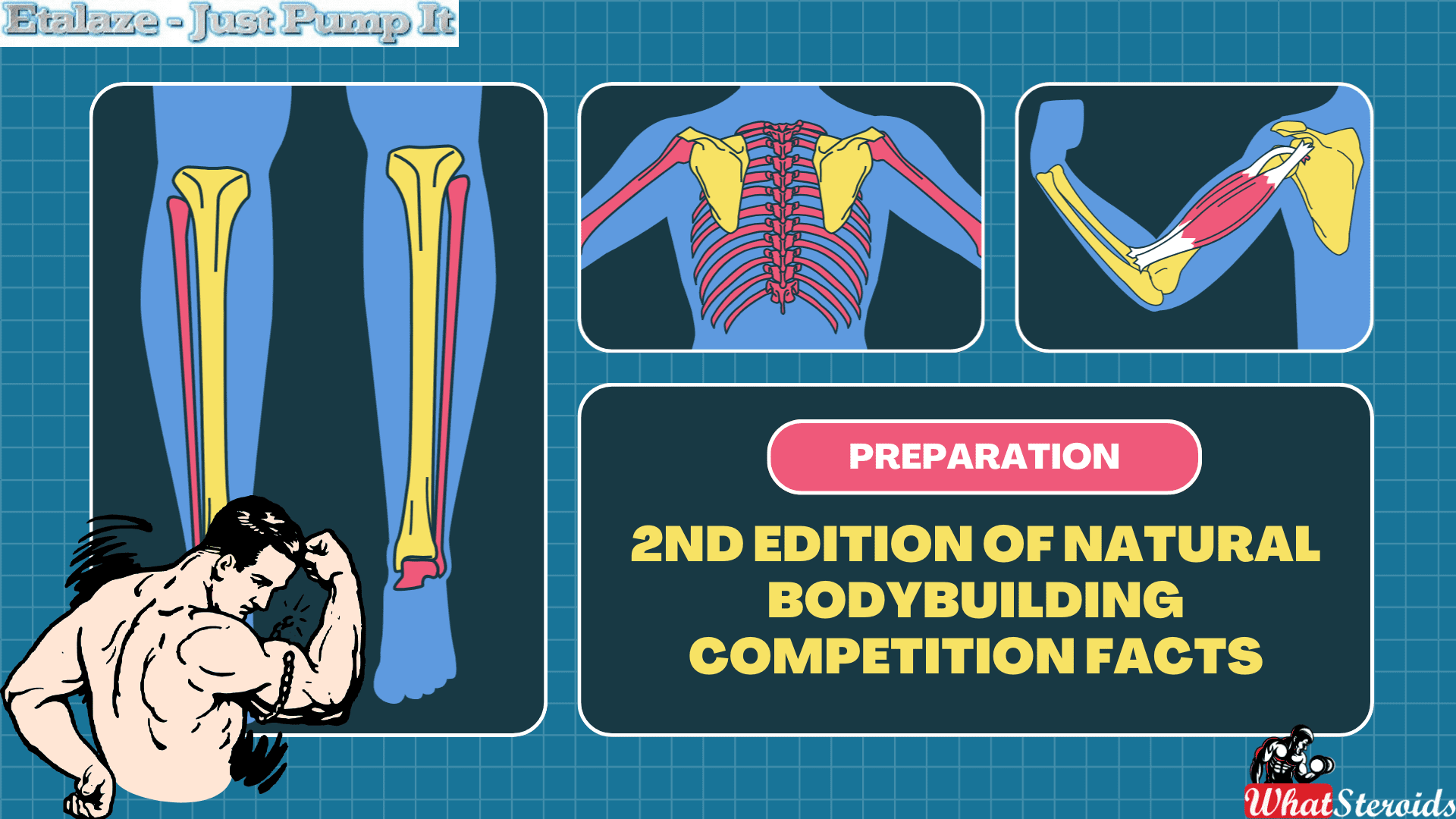
Natural bodybuilding competitions are designed to promote and celebrate athletes who build their physiques without the use of performance-enhancing drugs. These events emphasize fair play, health, and the natural development of muscle mass and definition.
The second edition of natural bodybuilding competitions has gained momentum globally, particularly focusing on drug-free athletes. These competitions are hosted by various organizations like the INBA/PNBA (International Natural Bodybuilding Association/Professional Natural Bodybuilding Association) and OCB (Organization of Competitive Bodybuilders).
In 2024, several notable events have been planned, including the INBA Natural Universe and INBA World Cup, both of which emphasize natural bodybuilding through rigorous drug testing policies. These events aim to showcase competitors who adhere to strict drug-free protocols, and winners often earn pro cards allowing them to compete in higher-level professional competitions.
These competitions focus on categories like men's bodybuilding, classic physique, and women's figure and bikini, among others. Athletes undergo polygraph and urine tests to ensure compliance with natural bodybuilding standards. The winners often receive medals, trophies, or pro status
-

 Steroids2 years ago
Steroids2 years agoVOX Testing: Why Bodybuilders Must Have It Tested Regularly
-

 Steroids2 years ago
Steroids2 years agoShavers and Other Body Grooming Equipment for Bodybuilders In 2023
-

 Steroids2 years ago
Steroids2 years agoChatGPT and Other Avenues to Find Great Bodybuilding Coaches
-

 Steroids2 years ago
Steroids2 years agoBest Oil Recommendations Before Competition for Subtle Shimmer
-

 Steroids2 years ago
Steroids2 years agoPowerlifting Vs Power Building: Find Out the Big Difference and When to Shift Between the Two
-

 Nutrition1 year ago
Nutrition1 year agoEverything Nutritional Food: What’s Too Much Or Too Little
-

 Bodybuilding Products12 months ago
Bodybuilding Products12 months agoTelmisartan In Bodybuilding: An Expert’s Advice
-

 Anabolic Steroids1 year ago
Anabolic Steroids1 year agoLegality of Anabolic Steroids In Latin America
-

 Beginners2 years ago
Beginners2 years agoTren Cycle for Beginners
-

 Bodybuilding1 year ago
Bodybuilding1 year agoList of FDA-Approved Peptides
-

 Bodybuilding2 years ago
Bodybuilding2 years agoCompetition Prep Cycle for Pro Bodybuilders
-

 Bodybuilding1 year ago
Bodybuilding1 year agoChia Seeds in A Bodybuilder’s Diet: An Expert’s Advice
-

 Anabolic Steroids11 months ago
Anabolic Steroids11 months agoHow Much Do You Know About B-AET? A Fat Burner You’ve Been Missing
-

 Bodybuilding7 months ago
Bodybuilding7 months agoPrimal Movements: Our Ultimate Guide for Maximum Results
-

 Steroids11 months ago
Steroids11 months agoAnadrol Cycle: Benefits, Doses, Alternatives, etc.
-

 Anabolic Steroids8 months ago
Anabolic Steroids8 months agoJoint Stiffness: How to Manage It While on AAS
-

 Steroids9 months ago
Steroids9 months agoOmnitope (Oxytocin)
-

 Product Reviews10 months ago
Product Reviews10 months agoTop Vitamins for Skin Health
-

 Bodybuilding1 year ago
Bodybuilding1 year agoHow Much Is Too Much Cardio? Understanding Heart Rate Zones
-

 Bodybuilding8 months ago
Bodybuilding8 months agoHow Effective is Bone Broth for Recovery?
-

 Steroids10 months ago
Steroids10 months agoMajor Bodybuilding Peptides Explained
-

 Steroids8 months ago
Steroids8 months agoSleeping Positions for Effective Muscle Recovery
-
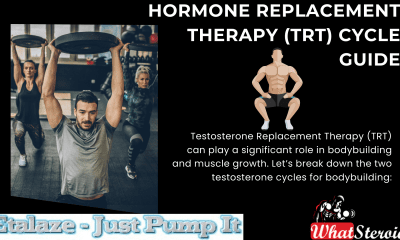
 Bodybuilding9 months ago
Bodybuilding9 months agoHormone Replacement Therapy (TRT) Cycle Guide
-

 Anabolic Steroids1 year ago
Anabolic Steroids1 year agoStart The New Year Strong With These Tips
-

 Bodybuilding1 year ago
Bodybuilding1 year agoCalorie Dumping: A Bodybuilder’s Guide


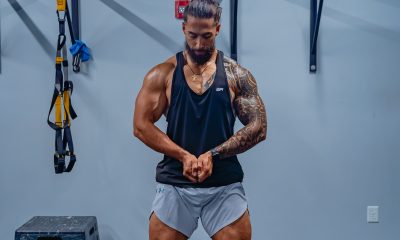



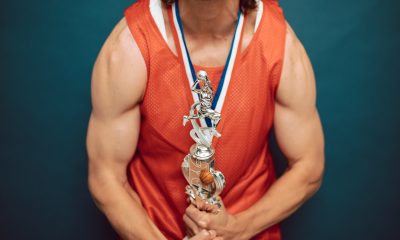




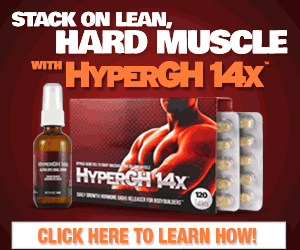
 Click here to buy 1-Test Cyp/DHB 100 by Dragon Pharma
Click here to buy 1-Test Cyp/DHB 100 by Dragon Pharma









